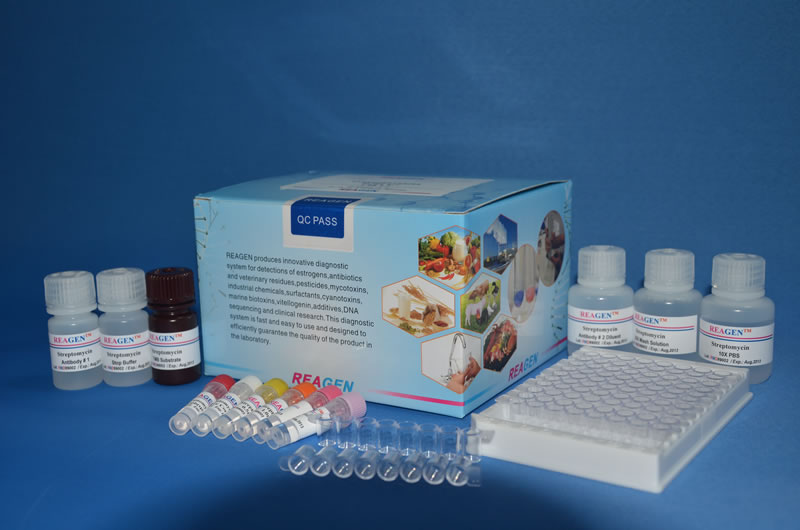Anti-p53 (N-term), clone Y5
货号: 04-1083 产品名称: Anti-p53 (N-term), clone Y5 品牌: Millipore 规格: EA 3周到货 生化实验
Anti-p53 (NT) Antibody, clone Y5, rabbit monoclonal
Close
REFERENCES
Regulation of p53 in response to DNA damage.
Lakin, N D and Jackson, S P (1999) Oncogene, 18: 7644-55 (1999)
p53, the cellular gatekeeper for growth and division.
Levine, A J (1997) Cell, 88: 323-31 (1997)
p53: at the crossroads of molecular carcinogenesis and risk assessment.
Harris, C C (1993) Science, 262: 1980-1 (1993)
p53 mutations in human cancers.
Hollstein, M, et al. (1991) Science, 253: 49-53 (1991)
View All
Species Reactivity Key Applications Host Format Antibody Type
H, R WB, IH(P), ICC, IP Rabbit Unpurified Monoclonal Antibody
Description:
Anti-p53 (NT) Antibody, clone Y5, rabbit monoclonal
Promotional Text:
Special Shipping Offer on Antibodies
100% Performance Guaranteed
Specificity:
The antibody should recognize human wild-type and mutant p53.
Molecular Weight:
~53 kDa
Epitope:
N-terminus
Immunogen:
Synthetic peptide corresponding to residues in the N-terminus of human p53.
Clone:
Y5
Isotype:
IgG
Background Information:
p53 was discovered in 1979 as a cellular protein associating with the transforming protein of SV40 tumor virus. Since then, many different biochemical functions have been attributed to the 53 kD phosphoprotein. Experimental evidence has suggested that p53 acts as a negative regulator of cell growth in normal cells (Finlay, 1989). Thus, the inactivation or mutation of p53 may be an essential step in the development of malignancy (Lane and Benchmol, 1990). Wild-type p53 levels in normal cells and tissues were found to be very low. Mutant p53 polypeptide, however, is often found to be present at high concentrations in mammalian tumors and tumor cell lines. For example, in an immuno-histochemistry study 40% of human breast cancer showed elevated levels of mutant p53 in the cell nucleus. Mutations of the p53 protein have some characteristic features:
a) Most of them are missense point mutations giving rise to an altered protein function.
b) Many -but not all- mutant p53 proteins exhibit a common mutant structure, which can be recognized by monoclonal antibodies specific for p53 in the mutant conformation.
View All »
Species Reactivity:
Human
Rat
Species Reactivity Note:
Human and rat.
Application Notes:
Immunohistochemistry Analysis: A 1:50 dilution from a representative lot detected p53 in human skin cancer tissue, showing nuclear localization of p53.
Immunocytochemistry Analysis: A 1:100 dilution from a representative lot was used in IC.
Immunoprecipitation Analysis: A 1:20 dilution from a representative lot was used in IP.
View All »
Control:
A431 cell lysate
Quality Assurance:
Evaluated by Western Blot on A431 cell lysates.
Western Blot Analysis: A 1:500 dilution of this antibody was used to detect p53 in A431 cell lysate.
Purification Method:
Unpurified
Presentation:
Rabbit Monoclonal in buffer containing 50 mM Tris-Glycine (pH 7.4), 0.15 M NaCl containing 40% Glycerol, 0.01% sodium azide and 0.05% BSA.
Storage Conditions:
Stable for 1 year at -20ºC from date of receipt.
Handling Recommendations: Upon first thaw, and prior to removing the cap, centrifuge the vial and gently mix the solution. Aliquot into microcentrifuge tubes and store at -20°C. Avoid repeated freeze/thaw cycles, which may damage IgG and affect product performance. Note: Variability in freezer temperatures below -20°C may cause glycerol containing solutions to become frozen during storage.
View All »
UniProt Number:
P04637
Entrez Gene Number:
NM_000546.3
-20°C

